|
|
|
Sort Order |
|
|
|
Items / Page
|
|
|
|
|
|
|
| Srl | Item |
| 1 |
ID:
132229
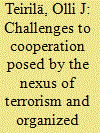

|
|
|
|
|
| Publication |
2014.
|
| Summary/Abstract |
The recent conflict in the Sahel area is another case where the nexus of terrorism and organized crime causes challenges to the international community. Comparing the situation with that of the Andean region brings forth the challenges faced when dealing with this type of conflict: the states' weak presence in the remote regions, the insurgents' ability to offer income and "security" to the people, immediate threat to international investments, unresolved political/regional issues, the marriage of convenience of insurgents/terrorists and organized crime, internal divisions of the insurgent groups and also ideologies surviving or suffering after the elimination of their leaders
|
|
|
|
|
|
|
|
|
|
|
|
|
|
|
|
| 2 |
ID:
094593
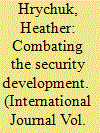

|
|
|
| 3 |
ID:
163566


|
|
|
|
|
| Summary/Abstract |
Pakistan, alongside other developing countries, is struggling to understand, plan and realize the energy-environment-economic nexus. In this study, we develop a national-scale bottom-up energy optimization model (Pak-TIMES) employing ANSWER-TIMES modeling framework which provides insight into this nexus for Pakistan. The reference energy system of Pak-TIMES model provides energy demand, supply, cost of energy and GHGs emissions. In total, five supply side scenarios enacted in this study are BAU (Business As Usual), RE-30 (30% renewables), RE-40 (40% renewables), Coal-30 (30% Coal) and Coal-40 (40% Coal) for the period 2015–2035. The results suggest that the cumulative investment cost incurred will be 170 billion USD to meet the electricity demand (3091 PJ) by 2035 with 181.5 million tons of GHGs emission in the BAU scenario. The most environmentally ambitious pathway, the RE-40 scenario will require 179.2 billion USD for investment with 96.0 million tons of GHGs emission. The Coal-40 scenario will cause the highest amount of GHGs emissions, i.e., 338.9 million tons with an estimated investment cost of 184.8 billion USD. Based on the results of this study, PAK-TIMES model, it is recommended that government needs to invest in renewables; given that, the environmental cost of non-renewable energy solutions is significantly higher.
|
|
|
|
|
|
|
|
|
|
|
|
|
|
|
|
| 4 |
ID:
124510
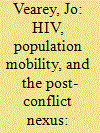

|
|
|
|
|
| Publication |
2013.
|
| Summary/Abstract |
As with many issues associated with the movement of people, linkages between mobility, HIV, conflict and post-conflict settings have often been based on conjecture rather than fact. Conflict was assumed to increase transmission of HIV, and displaced populations, refugees and armed forces were presumed to have higher HIV prevalence than host communities. However, recent evidence challenges these assumptions. This article explores the complex relationship between HIV and post-conflict settings, and considers if and how migrants and mobile populations - including returning refugees - are at increased risk of HIV acquisition in post-conflict settings.
|
|
|
|
|
|
|
|
|
|
|
|
|
|
|
|
| 5 |
ID:
158007
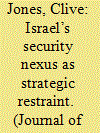

|
|
|
|
|
| Summary/Abstract |
This article examines the debates in Israel between 2009 and 2013 over Iran’s nuclear programme as a reflection of a particular type of civil–military or civil–security relationship. It analyses how key actors within that relationship – particularly those with an intelligence background – engaged with media outlets in Israel and further afield to influence domestic and international opinion over how best to contain Iran’s nuclear ambitions. In so doing, it seeks to address one fundamental question: are governments in Jerusalem any longer the final arbiters over deciding what is in the national security interests of the State of Israel?
|
|
|
|
|
|
|
|
|
|
|
|
|
|
|
|
| 6 |
ID:
093166
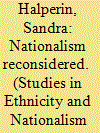

|
|
|
| 7 |
ID:
092345
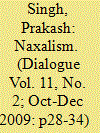

|
|
|
| 8 |
ID:
183247


|
|
|
|
|
| Summary/Abstract |
The radical transformation of the Saudi Kingdom underway since early 2015 raises the core issue of Crown Prince Mohammad Bin Salman’s legitimacy. By balancing his defiance of the royal family through the popular support of Saudi youth, the Crown Prince seeks to consolidate his power, which reverberates in substantial changes in domestic governance and foreign policies. The assertive regional policy under King Salman and his heir also revealed tensions arising from their divergent world visions due to a generational gap. This has resulted in an incoherent and downgraded Saudi leadership in the Middle East and North Africa (MENA) region. This illustrates how domestic decision-making affects actors’ choices in foreign policy, contributing to the theoretical debate that integrates foreign policy analysis into International Relations (IR) theory.
|
|
|
|
|
|
|
|
|
|
|
|
|
|
|
|
| 9 |
ID:
165381


|
|
|
|
|
| Summary/Abstract |
This study provides new evidence on the nexus between fiscal deficits and economic growth among ASEAN countries in the pre- and post-Global Financial Crisis (GFC) periods. Using annual data from 2001 to 2015, three results stand out. First, fiscal deficits are found to be growth-deteriorating in the pre-Crisis period and growth-enhancing in the post-Crisis period. Second, the impact of fiscal deficits on growth in pre- and post-GFC are robust to different measures of economic growth. Third, among control variables, inflation is important in influencing economic growth in the pre-Crisis period while exchange rate and inflow of foreign direct investment have a positive impact on growth in the post-Crisis period.
|
|
|
|
|
|
|
|
|
|
|
|
|
|
|
|
| 10 |
ID:
103926
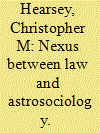

|
|
|
| 11 |
ID:
158061


|
|
|
|
|
| Summary/Abstract |
Majority of temporary labour migrants in the Gulf originate in countries that are not involved in devastating armed conflicts. Migrations from conflict-ridden countries to the Gulf are not negligible, however, and they have been growing in the last decades. The overview of migrations from the major refugee-producing countries suggests that we may distinguish between different categories of mixed migrations; inter alia, migrants who migrated to the Gulf prior to, during and after the armed conflicts in their home countries. We argue that these migrations happened in parallel with the tremendous economic growth that the Gulf countries have experienced in the last decades. Of note, however, is that they also coincide with escalations of armed conflicts in several sending countries, which may indicate that some of these migrations are also the result of war- or security-related push forces. We also contend that the dynamics of migrations from countries in conflict may in addition be related to the foreign policies of the Gulf countries, which are often closely related to their treatment of different migrant groups.
|
|
|
|
|
|
|
|
|
|
|
|
|
|
|
|
| 12 |
ID:
087571
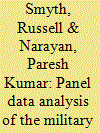

|
|
|
|
|
| Publication |
2009.
|
| Summary/Abstract |
While a number of studies examine the nexus between military expenditure and economic growth, little consideration has been give to the effect of military expenditure on external debt. This article examines the impact of military expenditure and income on external debt for a panel of six Middle Eastern countries - Oman, Syria, Yemen, Bahrain, Iran, and Jordan - over the period 1988 to 2002. The Middle East represents an interesting study of the effect of military expenditure on external debt because it has one of the highest rates of arms imports in the world and it is one of the most indebted regions in the world. The study first establishes whether there is a long-run relationship between military expenditure, income, and external debt in the six countries using a panel unit root and panel cointegration framework and then proceeds to estimate the long-run and short-run effects of military expenditure and income on external debt. The study finds that external debt is elastic with respect to military expenditure in the long run and inelastic with respect to military expenditure in the short run. For the panel of six Middle Eastern countries, in the long run a 1% increase in military expenditure results in between a 1.1 % and 1.6% increase in external debt, while a 1% increase in income reduces external debt by between 0.6% and 0.8%, depending on the specific estimator employed. In the short run, a 1% increase in military expenditure increases external debt by 0.2%, while the effect of income on external debt is statistically insignificant.
|
|
|
|
|
|
|
|
|
|
|
|
|
|
|
|
| 13 |
ID:
128900


|
|
|
|
|
| Publication |
2013.
|
| Summary/Abstract |
Over the last 30 years or so, the Enlightenment derived pattern on the secular state and 1960s modernization theories have proved themselves obsolete with regard to the understanding of political developments. As a result, scholar have attempted to unpack the variable the complex nexus between the temporal and sacred realms in Europe.
|
|
|
|
|
|
|
|
|
|
|
|
|
|
|
|
| 14 |
ID:
134149
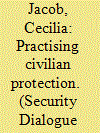

|
|
|
|
|
| Publication |
2014.
|
| Summary/Abstract |
Inspired by the practice turn in the field of international relations, this article contributes to the growing interest in the sociological and potentially transformative nature of the concept of human security, with a specific emphasis on the protection of civilians affected by armed conflict. Drawing on fieldwork conducted in Cambodia and Myanmar on the protection of children affected by armed conflict, it argues for a fresh analysis of human security through the lens of a 'politics of protection'. By mapping the work of international, government, and non-governmental actors involved in the protection of conflict-affected populations, the article shows that the distinction between welfare/development-oriented approaches and security-oriented approaches creates a protection gap for vulnerable populations in practice. This brings into question the salience of a security-development nexus conceptualization of human security. Instead, a politics of protection lens offers an alternative starting point for the study of security practices in conflict-affected societies, and facilitates a reconceptualization of human security as a transformative approach to contesting the politics and practice of civilian protection.
|
|
|
|
|
|
|
|
|
|
|
|
|
|
|
|
| 15 |
ID:
074773


|
|
|
|
|
| Publication |
2006.
|
| Summary/Abstract |
International relations scholars and practitioners alike have paid increasing attention to how malevolent non-state actors like terror groups and transnational criminal organisations challenge the state and otherwise threaten secure and stable human relations. Scholars and experts have yet to agree on the existence, nature and scope of enduring alliances (or a nexus) between crime and terror groups. In this article, the author wades into the debate and offers a new perspective using an analytical framework rooted in James Rosenau's postinternationalist paradigm. Drawing on research gathered through a recently-completed comparative study of the crime-terror nexus, the article notes that two forms of the crime-terror nexus exist. Such bifurcation eclipses the more parsimonious view that criminals and terrorists only engage in marriages of convenience to further their methods but their motives maintain long-term separation. The articles concludes with suggestions on how to develop state policies that address all forms of the crime-terror nexus.
|
|
|
|
|
|
|
|
|
|
|
|
|
|
|
|
| 16 |
ID:
180137


|
|
|
|
|
| Summary/Abstract |
The European Union (EU) has the world's most extensive regional power trade, making it essential for the EU environmental energy policies. Understanding the nexus amongst water, power and CO2 emissions is essential for sustainable water and energy resource management. Although a number of related studies on the nexus have been conducted, integrating virtual water and CO2 emission footprints for the power sector requires further attention. The current study analyses the virtual water and CO2 emissions embodied in the power supply, demand and regional trade. A network model is developed to track the virtual water and CO2 emissions of the inter-regional power trade for the case of EU-27 countries in 2017. The total virtual CO2 emissions and the embodied virtual water in the EU inter-regional power trade are estimated as 7.0 × 104 t CO2 and 5.6 × 108 m3, with a hydropower contribution of 37.8%. The largest virtual water and CO2 emissions exporters are identified by France (8.8 × 107 m3) and Germany (2 × 104 t), whilst the largest virtual CO2 importer is Austria (1 × 104 t). The identified synergy of climate mitigation and water scarcity provides a benchmark for policymakers to develop strategies for sustainable power development considering the virtual footprint in trade flow simultaneously.
|
|
|
|
|
|
|
|
|
|
|
|
|
|
|
|
|
|
|
|
|